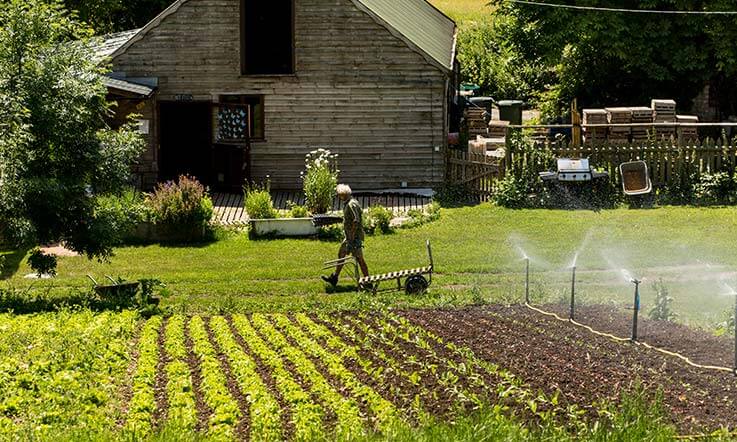This recently published manual contains 29 factsheets created within the POWER project (part of Horizon 2020, CORE Organic Co-fund project). The manual is split into chapters with the factsheets presented under four major themes. The first theme focusses on the management of outdoor areas and the second theme covers piglet welfare. Each 3-4 page factsheet offers a background explanation, lists relevant legislation and the topic’s relevance for animal welfare, environmental impact as well as cost and labour. Addressing welfare, environment and cost issues together is welcome since it acknowledges the importance of the three main ‘partners’ in any animal farming system and may support more holistic on-farm decision making.
Although pasture-based systems are covered, the farms represented in the manual are based in countries where it is common practice to manage organic pigs indoors with outdoor yards and so the first two themes address some focus areas of less relevance to UK pig farmers. That said, the factsheets are still worth a read for the extra information they contain including how to manage heat stress (1.4) or how heat influences ammonia emissions (1.5). Factsheet 2.5 (p.53) covers the importance of good gut health and the value of pre- and probiotic supplementation for feed digestibility, efficiency and immune status, and includes a useful recipe on fermenting woodland litter for adding to drinking water.
The third theme covers ‘best practice’, illustrating how access to pasture, forage use and vegetative cover can be optimised in different systems. The farms in this section have undertaken a life cycle analysis, again assessing animal welfare, environmental impact and productivity. The findings here include a large range of carbon emissions at 3.5 – 10 kg CO2 equivalent per kilo of weaned piglet, reflecting differences in litter size, land availability, ground cover, manure management and imported feed.
The fourth theme covers innovative practices including mobile pig housing for both small and large groups, on-field farrowing units, and a woodland-based system for breeding and rearing pigs in Italy. The latter system illustrates how woodlands can be managed with ecological sensitivity and be productive whilst offering high animal welfare.
The manual is informative, well presented and attractive though weakened by the debatable value of its further reading recommendations for the target audience of farmers and advisors, since these are heavily biased towards journal articles which predominantly sit behind a paywall.
Lindsay Whistance
